I entered a shop looking at the nest of a pair of Barn Swallows, which had four fully grown chicks waiting for their parents to feed them. The parents flew into the shop and the female went near the nest, pretending to have brought food. But instead of offering food to the chicks, she called and flew off to a perch on the top of a ceiling fan’s blade. Soon, one chick gathered enough courage to follow the mother and made its first flight towards her, begging for food. Seeing this, one more chick flew from the nest to its mother. At this time, the mother again took a short flight to another perch in the shop, making the hungry chicks follow her again. Now the father joined the party. Flying towards the nest, he lured the remaining chicks to fly in his direction. The chicks faithfully followed their parents, taking short baby flights within the shop. And then one step ahead, the adults flew out of the shop and the brave chicks made their first flight into the real world! They flew out under the blue sky, but were careful to fly very close to the ground, and within a few seconds all returned back to their safe home. This whole flight training went on for two to three times until the babies had had enough for the day. The practice session went well and the baby Barn Swallows would soon be ready to make their long flights during migration. This observation of adults training the young ones, during my ongoing research on Barn Swallows nesting in the Himalaya, is one very special moment and will always remain close to my heart and in my memory forever.
This is how my love for birds and research took shape..
When I think about it, I only remember the days when I would just look up at the sky and would feel good about it. Having lived for 25 years in the crowded human-packed city of Delhi, whenever I felt overwhelmed by the concrete world around me, I would just look above and lose myself in the limitless heavens. (This was back when the air of Delhi was not quite so polluted.) I would get excited seeing birds flying freely in the vast sky. My actual journey began when I joined the Master’s course in Biodiversity and Conservation at the Guru Gobind Singh Indraprastha University in Delhi. The course included three field trips to different sites across India for understanding and documenting floral and faunal diversity. This helped me build my interest and get a direction for the future. I got interested in the avian world through a close friend, and then my passion to look for birds and understand their ecology never stopped.
Armed with a Master’s degree, my love for birds translated into research when I joined the Wildlife Institute of India, Dehradun as a project intern in the Amur Falcon project in Nagaland. Soon after joining, I got an opportunity to visit the northeastern states of Nagaland and Manipur. I was there with the project team to collect data on these falcons at their stop-over sites in the region, and to assist in satellite tracking of these long-distance trans-hemispheric migrants. Just after a few days of stepping into Nagaland, I witnessed the world-famous congregation of Amur Falcons and I remember the first time very vividly… “It was early evening; I was with my project mate, Alex Jacob, standing on top of a watch tower at Pangti, one of the major roost sites of the species in Nagaland. Anxiously, we waited for the Amur Falcons to arrive, as we had heard from locals that Amurs would come in huge numbers in the evening to roost there. In anticipation, we both were standing there, restless and unaware of what we were about to witness. Time passed, and as the sky took on its mosaic of orange and yellow evening hues, we heard high-pitched kree kree shrill-like calls. We saw a batch of falcons coming from one direction right in front of us, of around 500 individuals! And within no time, more large flocks of Amurs started to join, and then the sky, formerly blue with swashes of orange and yellow light, became filled with the black silhouettes of falcons! They were everywhere, going around in circles, calling, and sometimes so close to one another that in flight it appeared that they were going to crash into each other. This went on for a good five to ten minutes and as the light started to fade, the flocks slowly started to move towards their roosting site, a rubber plantation, where they would spend the night. This whole event was like a magnificent play, or I would say art of nature! Alex and I were the spectators, standing still, and deeply amazed!
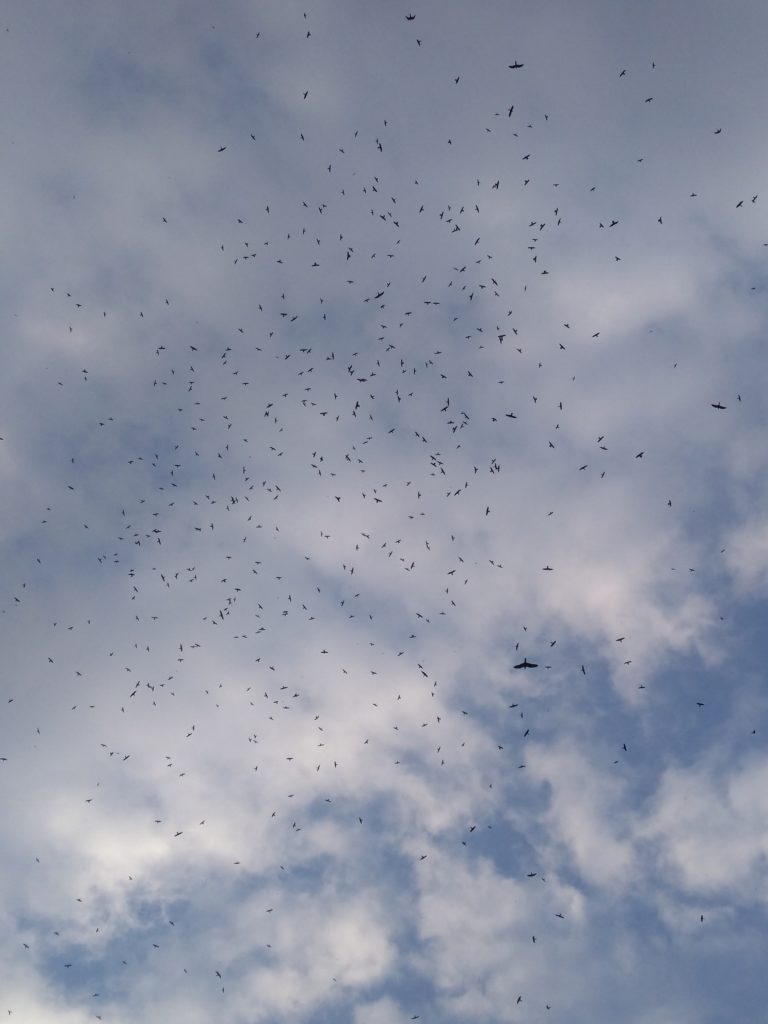 A flock of Amur Falcons congregating at Pangti in Wokha district of Nagaland (Image credit: Alex Jacob)
A flock of Amur Falcons congregating at Pangti in Wokha district of Nagaland (Image credit: Alex Jacob)
My journey of working on Amur Falcons, traveling to Nagaland and Manipur and witnessing their marvelous migration, led me to develop a keen interest in studying migration. This directed me to study another long-distance migrant, a breeding visitor to the Himalaya, the Barn Swallow for my PhD research with Dr. R. Suresh Kumar at the Wildlife Institute of India (WII), Dehradun.
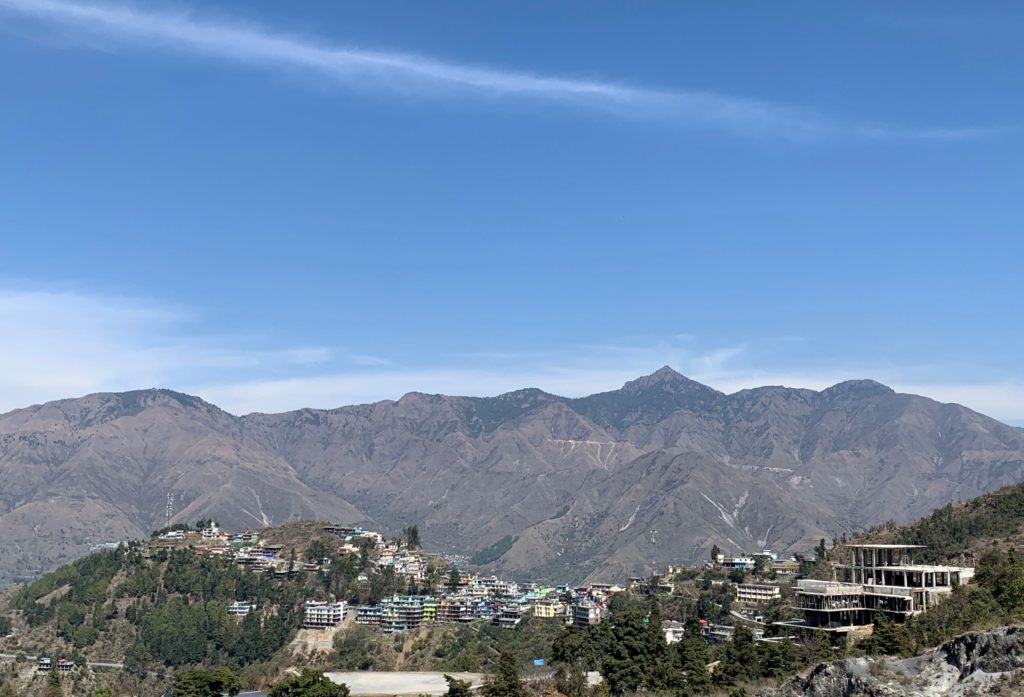
Kempty village (one of my study sites) near Mussoorie, in the Garhwal region of Uttarakhand, where Barn Swallows nest in the village shops.
Barn Swallows are known worldwide for their close association with humans. They build their cup-shaped mud nests in human-made structures such as shops and houses and that is why people across the world and in the Himalaya relate to the birds as their most awaited guests during spring. I am currently studying these close-knit swallow-human relationships, as well as the nesting ecology of swallows, and their population histories in the Indian Himalayan region.
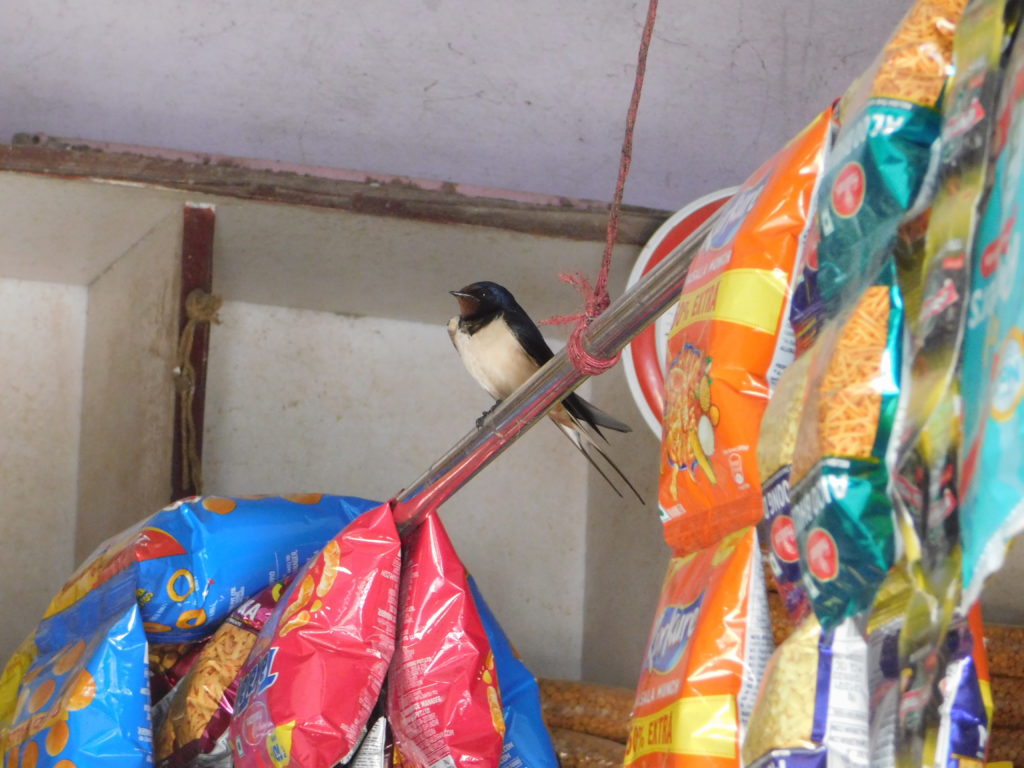 A Barn Swallow perched on an iron rod inside the shop where it is nesting in Kempty village, Uttarakhand
A Barn Swallow perched on an iron rod inside the shop where it is nesting in Kempty village, Uttarakhand
.
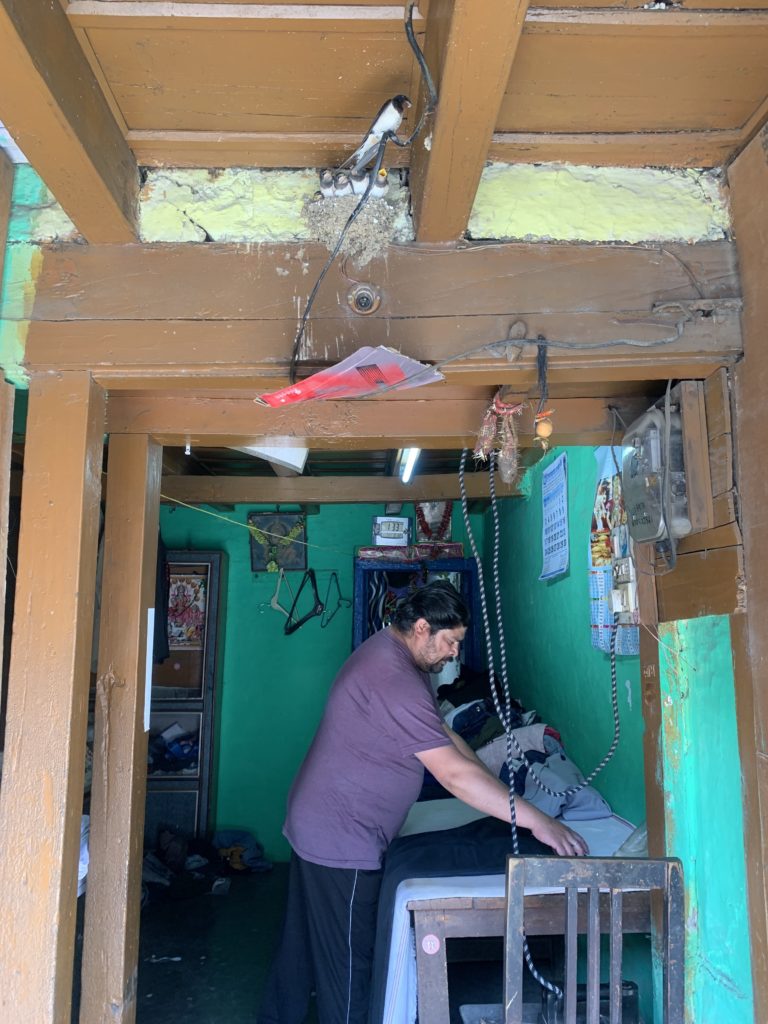 An adult Barn Swallow guarding the nest where five chicks are begging for food in a shop in Bhowali near Nainital, Uttarakhand.
An adult Barn Swallow guarding the nest where five chicks are begging for food in a shop in Bhowali near Nainital, Uttarakhand.
I love what I do because..
Every day, nature has something new to offer, and this is what keeps me going, to seek more. Seeing Barn Swallows going about their business in heavily crowded areas makes me wonder about their adaptive behavior. Since they choose to be around humans, I also follow their movements. My work starts with interacting with people who are hosting these little guests in their homes and shops. This is the part of my research that I like the most. Seeing how comfortable swallows are around humans always amazes me. It appears like the swallows know their humans and the humans know their swallows. For instance, in a small vegetable and fruit shop in Nainital, which is invariably always packed with customers, I regularly see two pairs of swallows busy feeding their hungry chicks;, flying past and sometimes cutting through the people gathered in the shop.
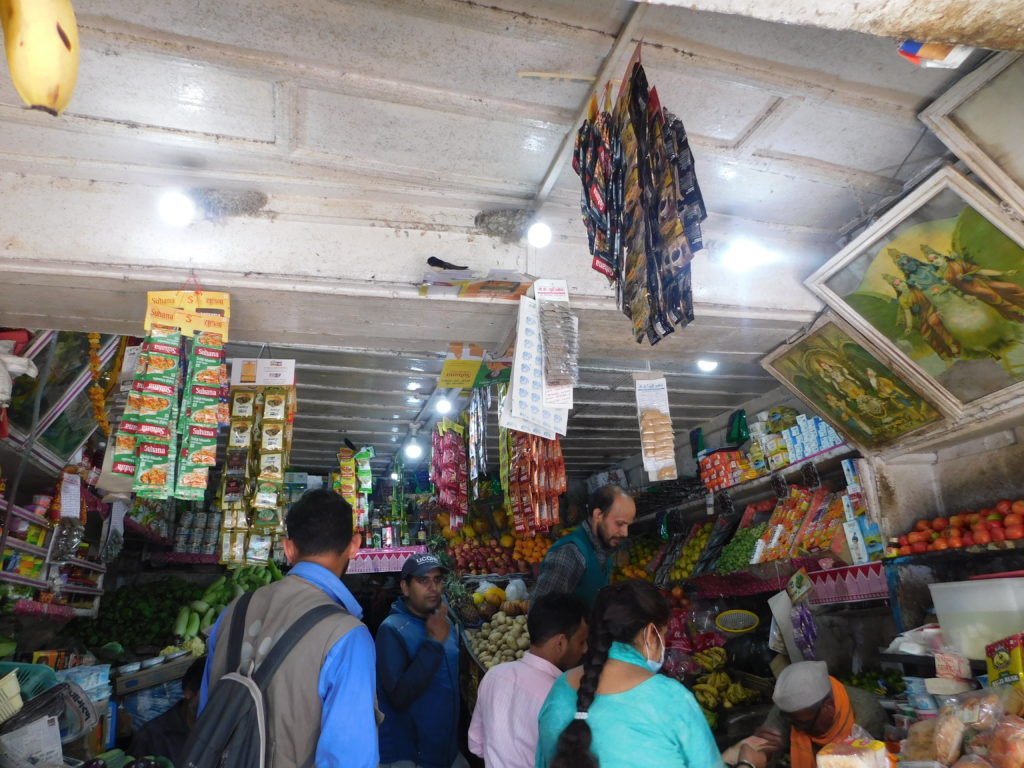 Barn Swallows who have adapted to nest within busy shops in crowded towns like Nainital.
Barn Swallows who have adapted to nest within busy shops in crowded towns like Nainital.
My work requires me to be humble and listen carefully to the stories of people who know these birds better than any other outsider. In science, we often underestimate the curiosity of local people. During my surveys across Uttarakhand, I came across a welcoming host, Sri Jagat Singh, in a remote village in Pithoragarh district. He told me the story of his enquiry with these birds. He said, “Ek baar maine socha ki ye har roj ghonsle me meri chidhiya hi aa rahi hain, ya koi aur. Toh ye jaan ne ke liye maine chidiya ke paon me laal nail polish laga di, par kuch dino me nail polish toh nikal gayi!” (I wanted to check whether it was the same swallow that comes to my shop every day, or some other individual. So to understand that, I painted the leg of the swallow with red nail polish; but in a few days, the nail polish got washed off!), he said smilingly. He was a researcher on his own!
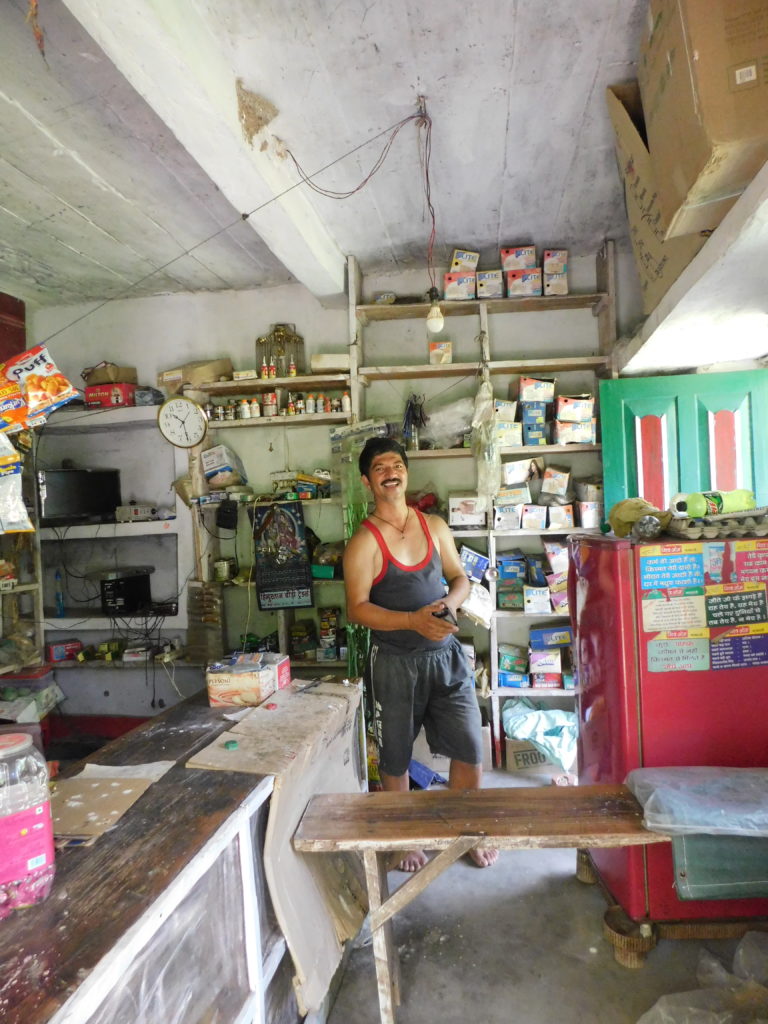 Sri Jagat Singh here from a village in Pithoragarh district who curiously shared his information on the Barn Swallows nesting in his shop.
Sri Jagat Singh here from a village in Pithoragarh district who curiously shared his information on the Barn Swallows nesting in his shop.
Barn Swallows are making me go to places in search of them, sometimes to busy towns and to remote villages, where I get to interact with these people who, every year, keenly wait for these summer visitors to come to their shops or houses to raise their young. I get to interact with people with different beliefs and understand their relationship with these birds. I believe these people are actually the real conservation heroes of the Barn Swallows.
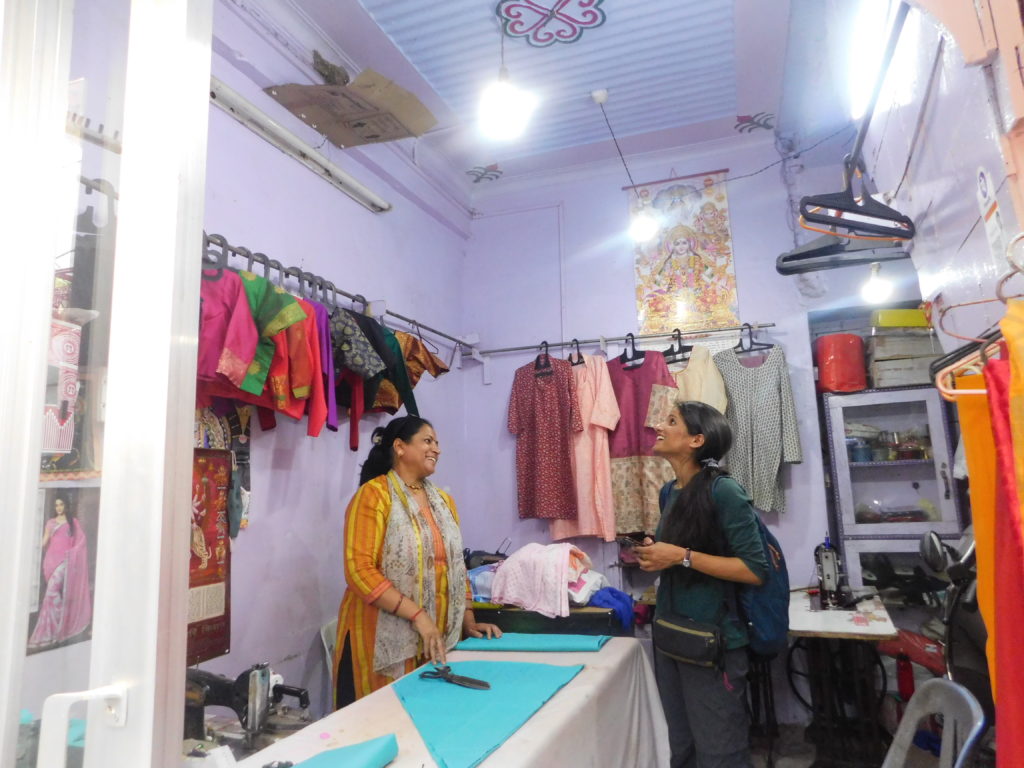 People of the hills who are comfortable sharing their space with the Swallows. Here, the owner of a tailoring shop in Almora explaining the nesting of Barn Swallows to her customers
People of the hills who are comfortable sharing their space with the Swallows. Here, the owner of a tailoring shop in Almora explaining the nesting of Barn Swallows to her customers
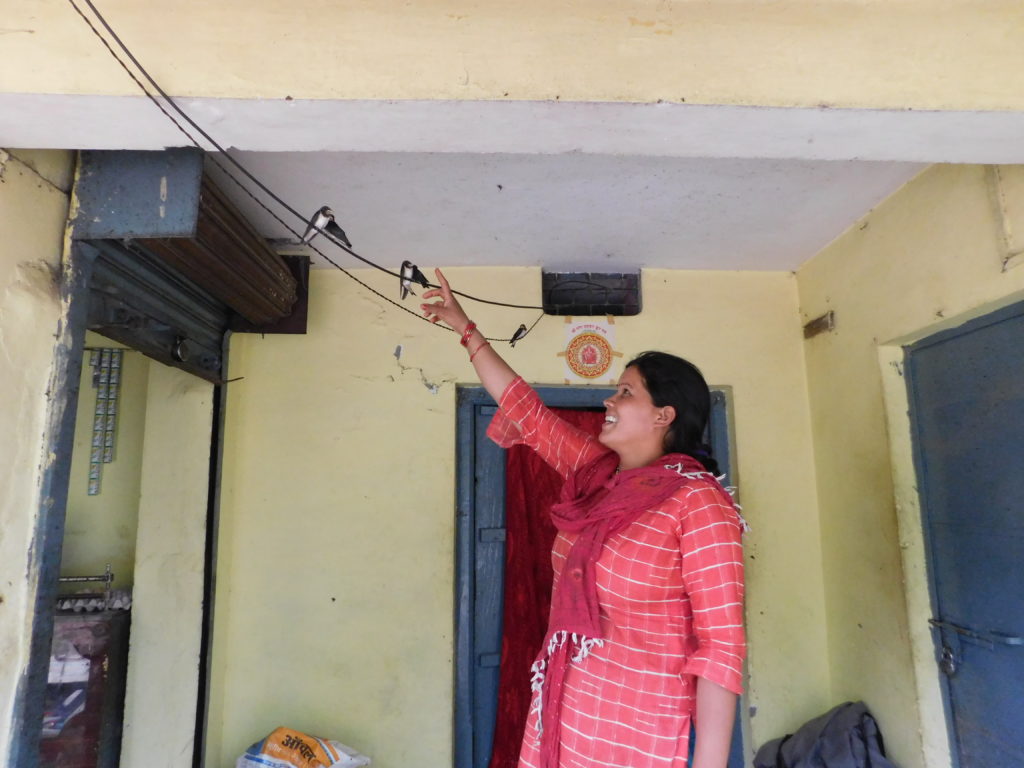 While people are comfortable with their visitors, Barn Swallows are also comfortable with the people they are sharing their space with. A lady in a small village in Mukteshwar showed me how the birds are completely fine in her presence.
While people are comfortable with their visitors, Barn Swallows are also comfortable with the people they are sharing their space with. A lady in a small village in Mukteshwar showed me how the birds are completely fine in her presence.
Challenges I have faced..
While the aspect I like the most is interacting with people, the challenges I face, although rare, usually stem from the same source. Being a female researcher out in the field has kept me on my toes. Except for a few uncomfortable instances, I am grateful to have met many good people. However, one unexpected interaction which happened to me recently was with a senior male scientist whom I met during my fieldwork. He suggested that I must have a team and not roam alone asking people about swallow nests as they would not like a woman visiting their shops alone. This incident deeply affected me as I had never experienced any kind of hostile behavior from the people who host swallows on their property. And the comment from this person had come across as stemming from a sense of male superiority and an inability to digest the fact that there are women researchers working in the field of wildlife and are going places for their work alone. I wouldn’t have mentioned this incident here but I hope that in reading this, researchers, especially women researchers in the field, would feel stronger and would continue to work towards their goals despite societal obstacles. Apart from these challenges, one major setback for the first 3 years of my PhD was getting the funds to work on a common species like Barn Swallows in India.
My advice to young researchers is..
Based on my experience, I would advise young researchers to be consistent towards their passion. Most young researchers who get into the field of ornithology get fascinated by just watching birds which gives them immense pleasure. However, once we start research, and plan on research questions, everything starts to feel so complicated. My advice is to not feel lost and lose interest at that moment. Once you start to dive deep into your research, you will be amazed about what all you can actually study scientifically. It is always better to take a good amount of time, do short-term projects and understand your interest before getting into any long-term study. This would help you enrich your understanding of different aspects and fields of interest, and would also help open your mind towards research. Just like those baby flights of Barn Swallows I mentioned earlier, take your little steps towards your passion.
Amarjeet Kaur
[email protected]
PhD Scholar
National Mission for Sustaining Himalayan Ecosystem
Wildlife Institute of India, Dehradun
Research Gate: https://www.researchgate.net/profile/Amarjeet-Kaur-3
LinkedIn: https://www.linkedin.com/in/amarjeet-kaur-19b7b013b/


It’s Amazing to hear from you ma’am. I’m also a MSc Wildlife student. I feel motivated by reading this. Thank you ma’am.
that’s Amazing i have seen many time barn swallow in Himalayas it always fascinated to watch them.
Great reading, Best wishes – pursue your passion
Nice work and a different prospective to see the bird adaption with changing habitat and their interaction with human
Great work Amarjeet!
Amazing ………